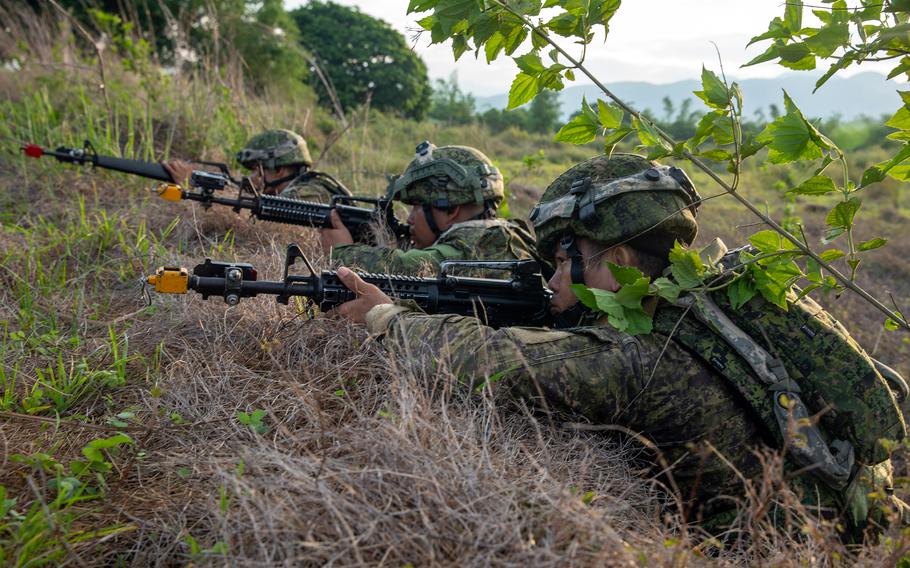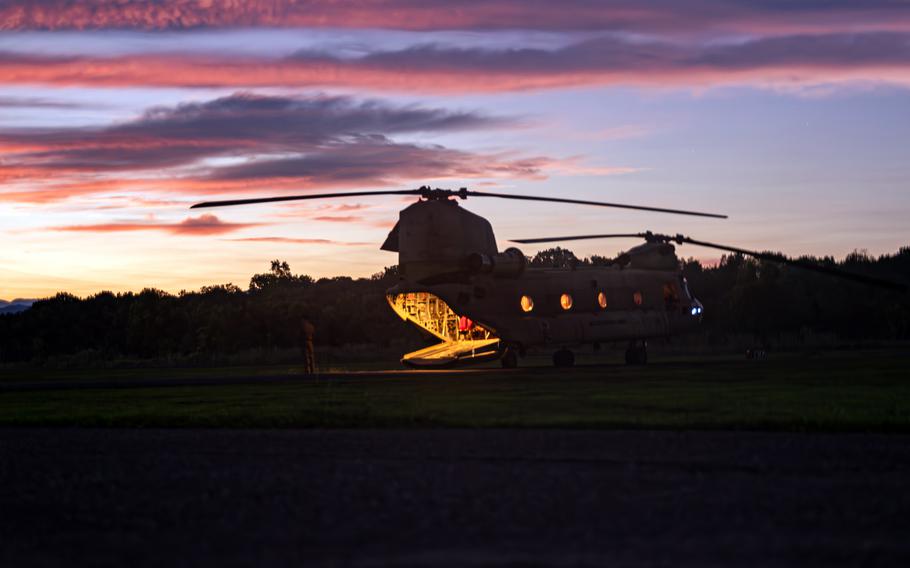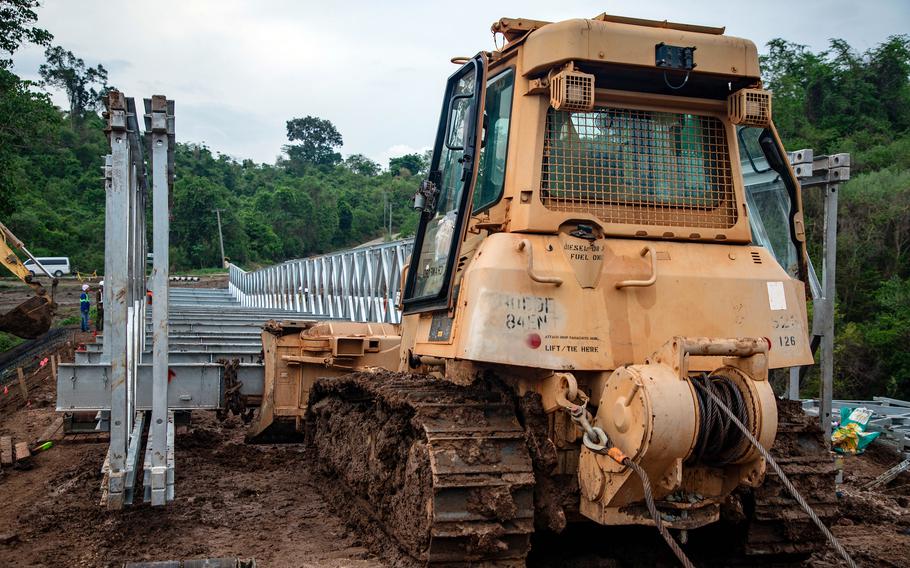
Philippines soldiers with the 7th Infantry Division scan the horizon for enemy forces during an air assault maneuver as part of the Joint Pacific Multinational Readiness Center-Exportable exercise on Fort Magsaysay, Philippines, on June 1, 2024. (Carleeann Smiddy/U.S Army National Guard)
Philippine soldiers are training on their home turf using U.S. Army Pacific’s premier wargaming technology.
The training, which began June 1 and wraps up Monday, marks the first time the Army has exported its Joint Pacific Multinational Readiness Center to the Philippines. It employs monitors, video and other digital information to provide real-time feedback to soldiers on the ground.
Almost 2,000 soldiers from both nations are participating in the exercise.
Under the scenario, two battalion-sized elements of U.S. and Filipino soldiers seized ground and defended it, Maj. Gen. Marcus Evans, commander of the 25th Infantry Division, said in a phone interview Friday from Fort Magsaysay.
“Those battalions then had to work through a deliberate attack, and then move into a defensive posture that they executed last night,” he said. “Currently, they’re preparing for their final operation, which will be another offensive operation against the opposing force in the next 48 hours.”
Army Pacific launched its readiness center concept in 2021, with permanent centers now located in Hawaii and Alaska.

A U.S. Army C-47 Chinook stands by before an air assault maneuver at the Joint Pacific Multinational Readiness Center-Exportable exercise on Fort Magsaysay, Philippines, on June 1, 2024. (Thomas Moeger/U.S Army National Guard)
They provide personnel and equipment that rival the kind of realistic combat training soldiers get at the Joint Readiness Training Center at Fort Johnson, La., or the National Training Center at Fort Irwin, Calif.
An exportable version of the center — called JPMRC-X — is sent into the region to help soldiers of partner nations hone their combat skills. JPMRC-X has been deployed to Indonesia for Garuda Shield and to Australia for Talisman Sabre.
The combat training now underway in the Philippines focuses on a brigade from the Philippine army’s 7th Infantry Division and a brigade from the Hawaii-based 25th ID.
The center rotations are run by the 196th Infantry Brigade, the Army’s training support brigade in the Indo-Pacific.
Deploying the center to Fort Magsaysay, about 60 miles north of Manila, required an immense logistical operation in and of itself, Evans said. Towers that enable data collection were shipped from Hawaii.
U.S. Army CH-47 helicopters flew the towers into the jungle via sling load, Evans said. New roads and trails were cut through the jungle to allow rapid movement of supplies, observer teams and opposition forces.

U.S. soldiers with the 8th Theater Sustainment Command partner with Philippine soldiers to build a line of communications bridge on Fort Magsaysay, Philippines, on May 28, 2024, in preparation for Joint Pacific Multinational Readiness Center-Exportable exercise. (Devin Davis/U.S. Army)
Planning for this exercise began about a year ago, and Philippine army leaders had a twofold goal in hosting the readiness center, Evans said.
The first objective, he said, was one shared by the 25th ID, which was to deepen the ability to operate together personally, procedurally and digitally.
Procedurally, that meant combining division-level staffs from the 25th ID and 7th Infantry Division and also from the two U.S. and Philippine brigades being trained.
“If you would walk into our Joint Operations Training Center right now, you would see U.S. soldiers sitting alongside Philippine army soldiers, performing functions such as mission command, clearance of fires, preparing intelligence products, preparing and maintaining a common operational picture to support the training,” he said. “We find we do it best when we are physically co-located, working shoulder-to-shoulder along with our partners.”
Most challenging has been the digital aspect of connecting mission command systems and sharing graphics used for fire support, Evans said.
“That is one of the areas we have to continue to work to improve,” he said.
Philippine army officials also want to better understand how to set up and execute a complex training scenario such as the one now taking place.
“We’ve been very fortunate to work closely with their Training and Doctrine Command throughout the duration of this exercise,” Evans said.
Supporting soldiers in the field in such austere conditions has been a valuable lesson for both forces.
“If you can imagine, the soldiers have been in the field for almost 10 days,” Evans said. “They are working through carrying varying loads, and every day temperatures reach almost 100 degrees with almost 100% humidity. So, the strain on the sustainment warfighting-function — it’s something that we have both learned a tremendous amount from.”